Belarus Tour Guide: Ideas for Your Trip!
What to see in Gomel: Main tourist attractions and unsolved mysteries
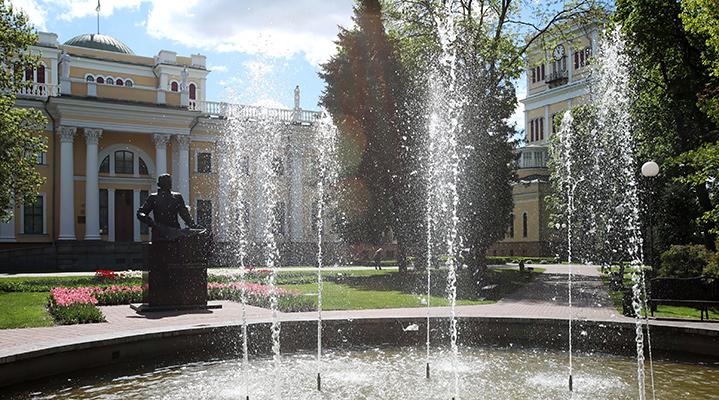
Gomel is the second largest city of Belarus, one of the country’s industrial, business and educational centers and a major regional transport hub. The city is old, cozy, perfect for taking a leisurely walk, seeing the sights that have survived over time. Gomel was first mentioned in the chronicles in 1142. Over centuries, the city has experienced its ups and downs but continued to live and grow.
At the end of the 18th century, the area around Gomel became part of the Russian Empire, and Catherine II awarded them to Count Piotr Rumyantsev. The Empress even earmarked money from the treasury to build a palace for him. The beautiful residence, which is the city’s architectural gem today, was built on the site of a wooden castle of the Czartoryski family, the former owner of the city. Over the years, the palace was rebuilt many times. With more new buildings added, the estate turned into one of the most impressive architectural ensembles of Eastern Europe. A great contribution to the development of the city and the residence was made by well-known diplomat and philanthropist Nikolai Rumyantsev, the renowned commander Ivan Paskevich and other representatives of the family…
There are several versions how the city derived its name. Most likely the city took its name after the stream Gomeyuk, which flew into the Sozh River near the place of the first settlement. In turn, the word “Gomeyuk” could derive from the Finno-Ugrian “homma joki” or a fast river. Some researchers recall the Slavic word "gom" which meant a hill... Another popular version is based on a tale of people flowing boats along the river in old times. They would warn each other about shallow places by shouting "Go! Mel!" (watch out for the shelf)…
Today, Gomel attracts tourists primarily due to its beautiful palace and park ensemble, which is among the top popular attractions of Belarus. But the city offers many more sights that can surprise you!
Palace of the Rumyantsevs and the Paskeviches
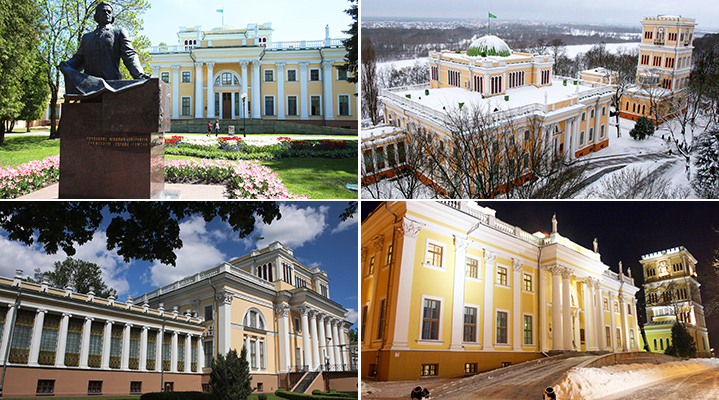 In 1777 Field Marshal Piotr Rumyantsev started the construction of the palace in a historical place on the bank of the Sozh River. In ancient times, it was a place of a Radimichi settlement and afterwards, until the end of the 18th century, the old castle of the Czartoryski princely family. The best architects of their time were involved in the construction project. According to scholars, the style of the building suggests that the project was supervised by talented architect Ivan Starov. He designed many buildings in St. Petersburg, including the famous Taurus Palace. The magnificent stone residence in Gomel became an early specimen of the Russian Classicism architecture.
In 1777 Field Marshal Piotr Rumyantsev started the construction of the palace in a historical place on the bank of the Sozh River. In ancient times, it was a place of a Radimichi settlement and afterwards, until the end of the 18th century, the old castle of the Czartoryski princely family. The best architects of their time were involved in the construction project. According to scholars, the style of the building suggests that the project was supervised by talented architect Ivan Starov. He designed many buildings in St. Petersburg, including the famous Taurus Palace. The magnificent stone residence in Gomel became an early specimen of the Russian Classicism architecture.
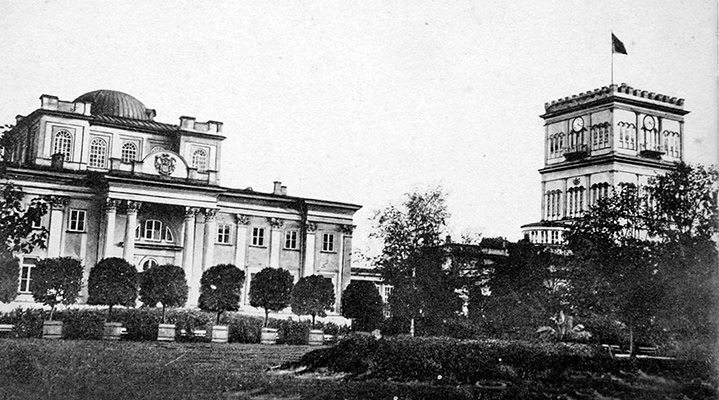 The next owner, Nikolai Rumyantsev, spearheaded big changes implemented by famous architect John Clark. The palace itself, a thing of beauty and sophistication, gradually grew into a real treasure trove: the Count was a connoisseur of art and a passionate collector. He did a lot to turn Gomel into a cozy European city in the early 19th century.
The next owner, Nikolai Rumyantsev, spearheaded big changes implemented by famous architect John Clark. The palace itself, a thing of beauty and sophistication, gradually grew into a real treasure trove: the Count was a connoisseur of art and a passionate collector. He did a lot to turn Gomel into a cozy European city in the early 19th century.
Field Marshal Ivan Paskevich acquired Gomel lands in 1834. He revived the estate to its former glory after several years of decline and continued the development of the palace ensemble. In 1919, the Palace of the Rumyantsevs and the Paskeviches was turned into a museum, and today it is one of the most visited attractions in the country.
Where: 4 Lenina Square
Gomel Palace and Park Ensemble
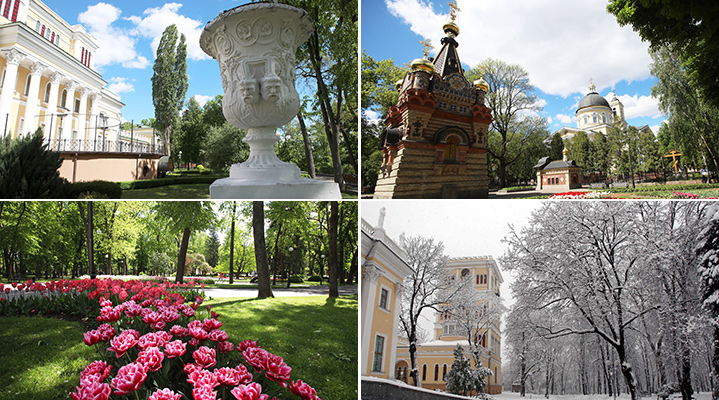 Once Count Ivan Paskevich got the palace into possession, he launched a large-scale refurbishment project. He invited prominent architect Adam Idzkowski who proposed many innovations. For example, the princely tower was built in place of the right wing, a grotto with a veranda was added to the facade from the side of the river...
Once Count Ivan Paskevich got the palace into possession, he launched a large-scale refurbishment project. He invited prominent architect Adam Idzkowski who proposed many innovations. For example, the princely tower was built in place of the right wing, a grotto with a veranda was added to the facade from the side of the river...
A magnificent park began to arise around the palace. Trees and shrubs were brought from various countries, allies were laid, lawns with flower beds were planted, grottoes were set up, gazebos, fountains, copies of antique sculptures were installed. The bed of the Gomeyuk ancient stream was turned into the Swan Pond. The park amazed contemporaries, and experts considered it one of the best specimens of landscape gardening art in the empire.
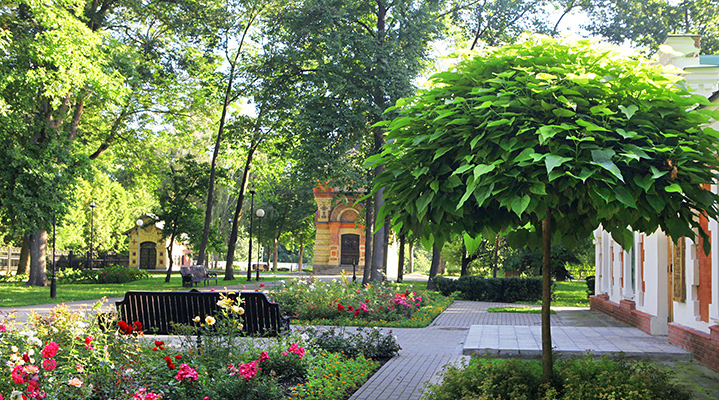 Today the ensemble covers 34 hectares. It is not only a monument of history and architecture, but also a natural heritage site. The palace and park ensemble includes the remains of an ancient and medieval town of the 15th-18th centuries, the Palace of the Rumyantsevs and the Paskeviches, Sts Peter and Paul Cathedral, a chapel and a family vault of the Paskevich family, the Hunting Lodge, and the Winter Garden with an observation tower ... The park is home to 5,000 trees, including a lot of exotic ones. It is delightful any time of the year. Thousands of tulips are planted here every spring - of course, so far fewer than in the world-famous Dutch flower park Keukenhof, yet there is nothing like this place anywhere else in Belarus.
Today the ensemble covers 34 hectares. It is not only a monument of history and architecture, but also a natural heritage site. The palace and park ensemble includes the remains of an ancient and medieval town of the 15th-18th centuries, the Palace of the Rumyantsevs and the Paskeviches, Sts Peter and Paul Cathedral, a chapel and a family vault of the Paskevich family, the Hunting Lodge, and the Winter Garden with an observation tower ... The park is home to 5,000 trees, including a lot of exotic ones. It is delightful any time of the year. Thousands of tulips are planted here every spring - of course, so far fewer than in the world-famous Dutch flower park Keukenhof, yet there is nothing like this place anywhere else in Belarus.
Other objects of the palace and park ensemble should be described separately, because each appeared here at different times and has its own history.
Princely Tower
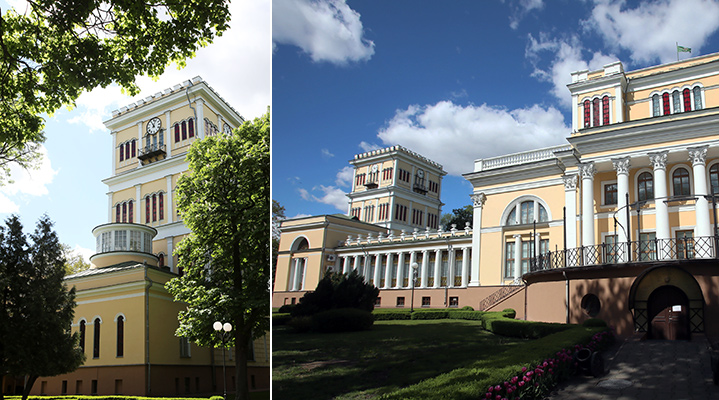 During a major refurbishment project Ivan Paskevich ordered to build a tower in the palace. This tower was used as his privy chamber. He brought here his extensive collections, war trophies and arranged a library. The attached building was connected with the central part of the palace with a gallery. Today this remarkable clock tower houses the exposition “The owners of the Palace of the Rumyantsevs and the Paskeviches”. It features original paintings, sculptures, weapons and personal belongings of aristocrats.
During a major refurbishment project Ivan Paskevich ordered to build a tower in the palace. This tower was used as his privy chamber. He brought here his extensive collections, war trophies and arranged a library. The attached building was connected with the central part of the palace with a gallery. Today this remarkable clock tower houses the exposition “The owners of the Palace of the Rumyantsevs and the Paskeviches”. It features original paintings, sculptures, weapons and personal belongings of aristocrats.
Sts Peter and Paul Cathedral
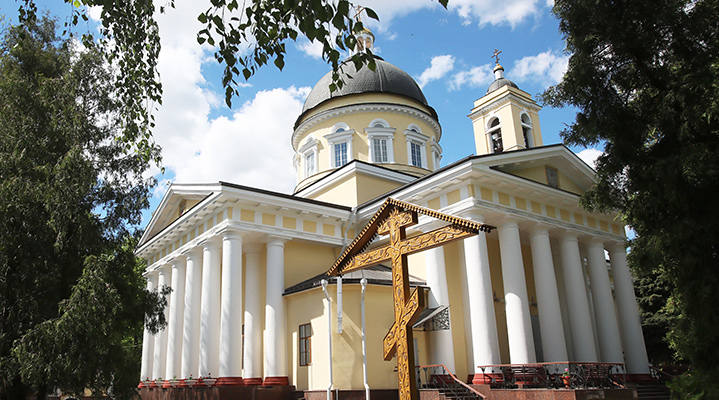 The construction of Sts Peter and Paul Cathedral was ordered by Count Nikolai Rumyantsev in 1808 and was in progress from 1809 to 1819. The beautiful building in the Classicism style was designed by architect John Clark. The cathedral is often compared to other famous temples of the similar style - Kazan Cathedral in Saint Petersburg and the Panthéon in Paris (the Church of Sainte-Geneviève). Over its history, the church in Gomel has welcomed many outstanding people - aristocrats, philosophers, writers. The church was shut down after the Russian Revolution, but some time later it was turned into a planetarium. For the past three decades it has been the main functioning church of the city.
The construction of Sts Peter and Paul Cathedral was ordered by Count Nikolai Rumyantsev in 1808 and was in progress from 1809 to 1819. The beautiful building in the Classicism style was designed by architect John Clark. The cathedral is often compared to other famous temples of the similar style - Kazan Cathedral in Saint Petersburg and the Panthéon in Paris (the Church of Sainte-Geneviève). Over its history, the church in Gomel has welcomed many outstanding people - aristocrats, philosophers, writers. The church was shut down after the Russian Revolution, but some time later it was turned into a planetarium. For the past three decades it has been the main functioning church of the city.
A chapel and a family vault of the Paskevich family
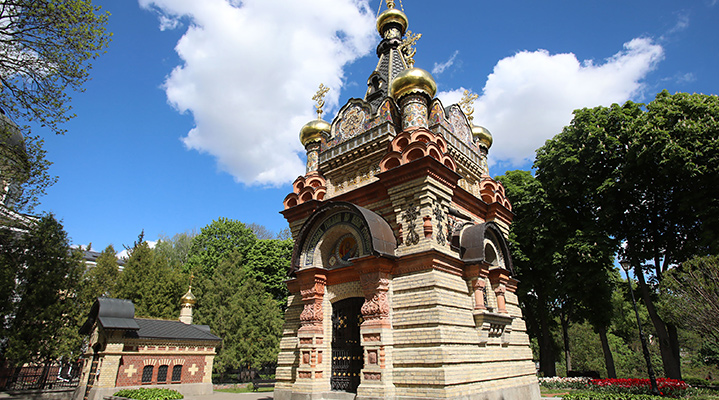 In 1870-1889 a chapel and a family burial vault was built next to Sts Peter and Paul Cathedral. The remains of the owner of the estate, commander Ivan Paskevich, and later other members of his family were buried here. The chapel built in the pseudo-Russian style resembles a small fairytale tower. Today it is one of the finest specimens of the 19th century religious architecture in Belarus. The crypt, where the aristocrats were laid to rest, is located at a depth of three meters: you can reach it from a pavilion specially built next to the chapel.
In 1870-1889 a chapel and a family burial vault was built next to Sts Peter and Paul Cathedral. The remains of the owner of the estate, commander Ivan Paskevich, and later other members of his family were buried here. The chapel built in the pseudo-Russian style resembles a small fairytale tower. Today it is one of the finest specimens of the 19th century religious architecture in Belarus. The crypt, where the aristocrats were laid to rest, is located at a depth of three meters: you can reach it from a pavilion specially built next to the chapel.
Winter Garden
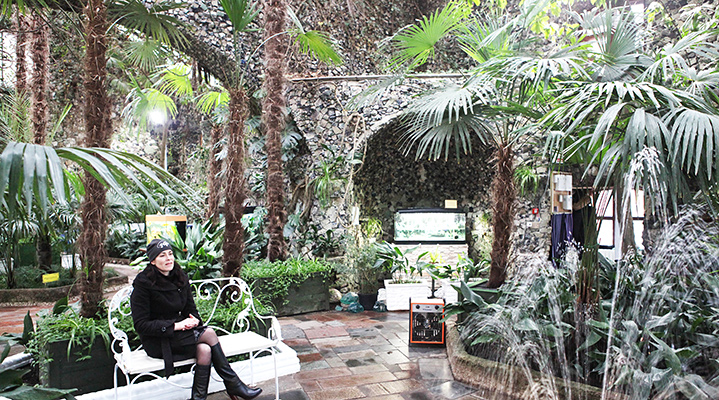 The Winter Garden was built in 1770–1780 simultaneously with the palace. Some sources say that the building was initially meant to be a servants’ house; other sources suggest that it was a military field office. Later, the building housed a school for nobility and even a sugar factory. In 1877 it was turned into a greenhouse boasting a rich collection of exotic plants. For this purpose, two ovens were built under the building, and the walls inside were lined with natural minerals so that the climbing plants form a living carpet.
The Winter Garden was built in 1770–1780 simultaneously with the palace. Some sources say that the building was initially meant to be a servants’ house; other sources suggest that it was a military field office. Later, the building housed a school for nobility and even a sugar factory. In 1877 it was turned into a greenhouse boasting a rich collection of exotic plants. For this purpose, two ovens were built under the building, and the walls inside were lined with natural minerals so that the climbing plants form a living carpet.
Observation tower
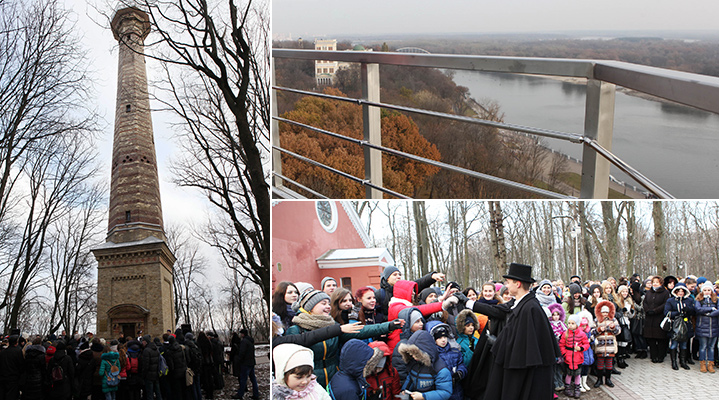 In the southern part of the palace and park ensemble, not far from the Winter Garden, there is an old tower of a former sugar factory, which once served as a chimney. In the underground room there was a boiler room that supplied steam to the machines. However, in the 1880s, during the reconstruction of the palace and the greenhouse, this truncated faceted cone became an excellent observation platform. The tower is 40 meters high together with a spire. You can go upstairs on a spiral staircase with 204 steps.
In the southern part of the palace and park ensemble, not far from the Winter Garden, there is an old tower of a former sugar factory, which once served as a chimney. In the underground room there was a boiler room that supplied steam to the machines. However, in the 1880s, during the reconstruction of the palace and the greenhouse, this truncated faceted cone became an excellent observation platform. The tower is 40 meters high together with a spire. You can go upstairs on a spiral staircase with 204 steps.
Hunting Lodge – Gomel History Museum
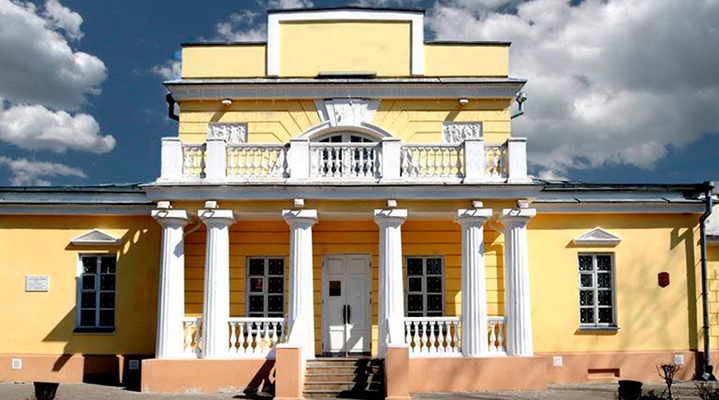 Count Nikolai Rumyantsev's summer residence built in the early 19th century is a fine specimen of the late Classicism architecture. The owner of the residence was not a hunter himself, and the estate, as historians assume, got the name due to its location on the heavily forested outskirts of the city. It was often called the Empire House for its unusual design and facades. Since 2009, it has been the Gomel History Museum dedicated to the centuries-old past and modern life of the city. The exposition spans seven rooms, with a number of rooms recreated to what they used to be.
Count Nikolai Rumyantsev's summer residence built in the early 19th century is a fine specimen of the late Classicism architecture. The owner of the residence was not a hunter himself, and the estate, as historians assume, got the name due to its location on the heavily forested outskirts of the city. It was often called the Empire House for its unusual design and facades. Since 2009, it has been the Gomel History Museum dedicated to the centuries-old past and modern life of the city. The exposition spans seven rooms, with a number of rooms recreated to what they used to be.
Museum visitors can learn a lot about the city on the Sozh River. For example, one of the most remarkable archaeological findings - the armory of the 12th-13th centuries - shows that Homyi was a large center of crafts and trade back then. Gomel of the 19th century was very proud of the estate’s last owner, Duchess Irina Paskevich, a remarkably kind-hearted woman, benefactor and patroness of the townspeople, the first translator of Leo Tolstoy's novel War and Peace into French.
Where: 32 Pushkina Street
Branch of the Shklyarov Museum of Old Believers and Belarusian Traditions in Vetka
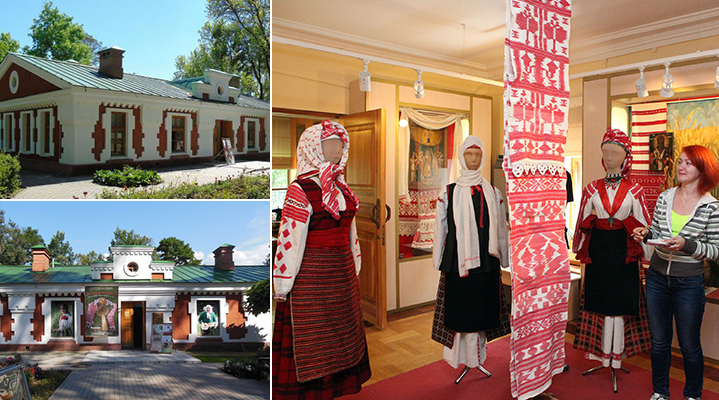 There is an unusual exposition in the palace and park ensemble in Gomel. The estate is home to the branch of the museum that local historian and collector Fyodor Shklyarov founded in the old believers' town of Vetka. The Gomel branch opened in 2008. In the 19th century, this part of the estate was used as a house for servants, and later as a chess and draughts club. Today, the museum exhibitions celebrating folk art and amazing artifacts of the past feature the collections of the Vetka Museum and are renewed every three to five months.
There is an unusual exposition in the palace and park ensemble in Gomel. The estate is home to the branch of the museum that local historian and collector Fyodor Shklyarov founded in the old believers' town of Vetka. The Gomel branch opened in 2008. In the 19th century, this part of the estate was used as a house for servants, and later as a chess and draughts club. Today, the museum exhibitions celebrating folk art and amazing artifacts of the past feature the collections of the Vetka Museum and are renewed every three to five months.
Sozh Embankment
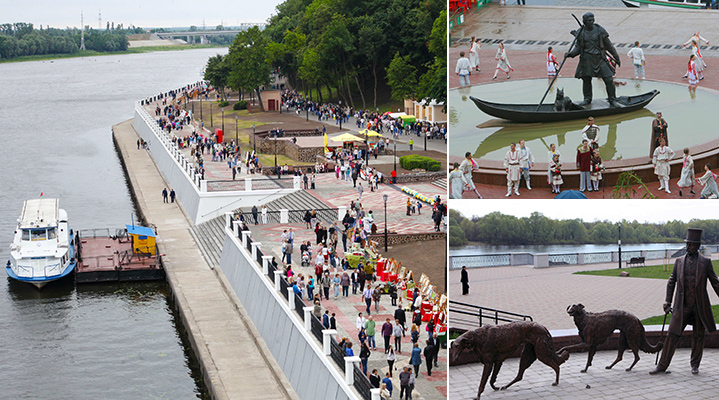 Gomel's natural landmark is the Sozh River which is by right considered one of the cleanest in Europe. The river is closely associated with the rich history of the city, and its bank, featuring an old citadel and the palace and park ensemble, has always been a popular recreation spot. It was landscaped by the Rumyantsevs and the Paskeviches. In the 1960-1970s, the waterfront was turned into an embankment and finally became a convenient and beautiful pedestrian zone after large-scale renovations in the 2010s.
Gomel's natural landmark is the Sozh River which is by right considered one of the cleanest in Europe. The river is closely associated with the rich history of the city, and its bank, featuring an old citadel and the palace and park ensemble, has always been a popular recreation spot. It was landscaped by the Rumyantsevs and the Paskeviches. In the 1960-1970s, the waterfront was turned into an embankment and finally became a convenient and beautiful pedestrian zone after large-scale renovations in the 2010s.
The embankment is about 2.5km long. Here one can stroll along the paths decorated with Belarusian ornaments, admire the beautiful views, and take pictures of impressive sculptures. For example, there is the Boatman sculpture near the city pier. The composition celebrates the city’s first resident who is depicted with a quiver and arrows behind his back. Next to him sits a lynx, the symbol of Gomel, which has been on the city coat of arms since the 18th century. Not far from the Swan Pond there is a bronze sculpture, A Walk with Greyhounds, telling the story of Prince Fyodor Paskevich and his pets Lord and Marko. Their funeral was so pompous that few people in the city would be honored with such a mourning ceremony. The tombstones on the graves of the princely dogs have survived to this day, and the city legend says that the ghosts of Lord and Marko still guard the palace at night and wait for their master.
Pedestrian Bridge over Sozh
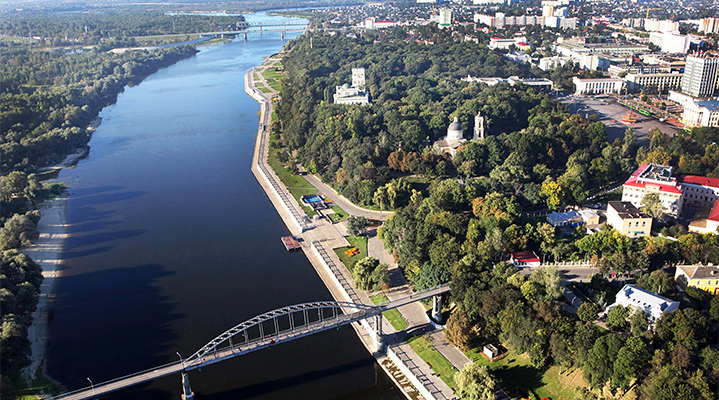 In the 1970s a pedestrian bridge was built over the Sozh, not far from the Kievsky Descent. There were several crossings along the river, but the only possible way to get to the beach on the other bank from the palace park was by a motor boat that made trips once an hour. Residents of the suburbs also had difficulties getting to work. This problem was settled thanks to a new bridge across the river along Baumana Street. An urban legend says that the central span together with the arch was assembled on the road, and only then transported to the site. The construction proceeded gradually, and soon the structure became a landmark of the city. The bridge was designed to make navigation possible. The bridge offers breathtaking views of the Sozh, the embankment and the pier, the monument to the first Gomel resident and, of course, the gorgeous palace and park ensemble.
In the 1970s a pedestrian bridge was built over the Sozh, not far from the Kievsky Descent. There were several crossings along the river, but the only possible way to get to the beach on the other bank from the palace park was by a motor boat that made trips once an hour. Residents of the suburbs also had difficulties getting to work. This problem was settled thanks to a new bridge across the river along Baumana Street. An urban legend says that the central span together with the arch was assembled on the road, and only then transported to the site. The construction proceeded gradually, and soon the structure became a landmark of the city. The bridge was designed to make navigation possible. The bridge offers breathtaking views of the Sozh, the embankment and the pier, the monument to the first Gomel resident and, of course, the gorgeous palace and park ensemble.
St. Ilya Church
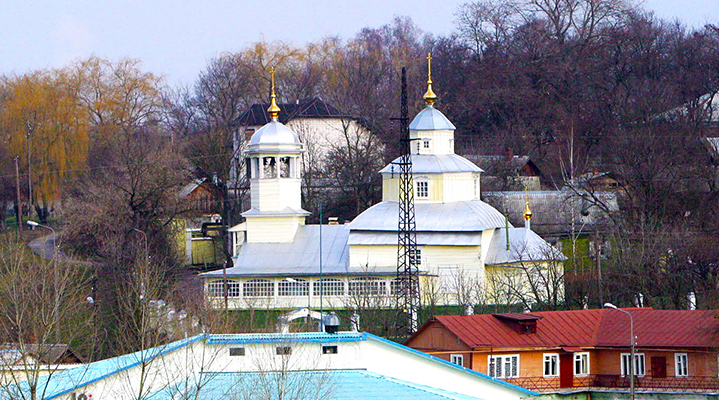 The Old Believers’ St. Ilya Church is located in the center of the city, close to the Sozh River. It is a specimen of the 18th-century Belarusian wooden architecture. It is noteworthy that the previous churches that stood at that site were also Old Believers’ churches. Both of them were demolished: the Church of the Savior in 1737 and the Church of Prophet Elijah in 1793. The existing church was built in 1773-1774 and consecrated in September 1794. In the first half of the 19th century, a double Old Believers’ monastery existed near the church. There is an assumption that Yemelyan Pugachev visited the church to pray. During its history, the church belonged to Old Ritualists for some time, but was returned to Old Believers. It was closed for a short while, but during the Soviet times the church operated. The building of the church consists of three parts: the narthex, the nave, and the five-sided apse.
The Old Believers’ St. Ilya Church is located in the center of the city, close to the Sozh River. It is a specimen of the 18th-century Belarusian wooden architecture. It is noteworthy that the previous churches that stood at that site were also Old Believers’ churches. Both of them were demolished: the Church of the Savior in 1737 and the Church of Prophet Elijah in 1793. The existing church was built in 1773-1774 and consecrated in September 1794. In the first half of the 19th century, a double Old Believers’ monastery existed near the church. There is an assumption that Yemelyan Pugachev visited the church to pray. During its history, the church belonged to Old Ritualists for some time, but was returned to Old Believers. It was closed for a short while, but during the Soviet times the church operated. The building of the church consists of three parts: the narthex, the nave, and the five-sided apse.
Where: Kommisarova Street
Lenina Square, 60-meter-high flagpole, and Gomel’s zero kilometer
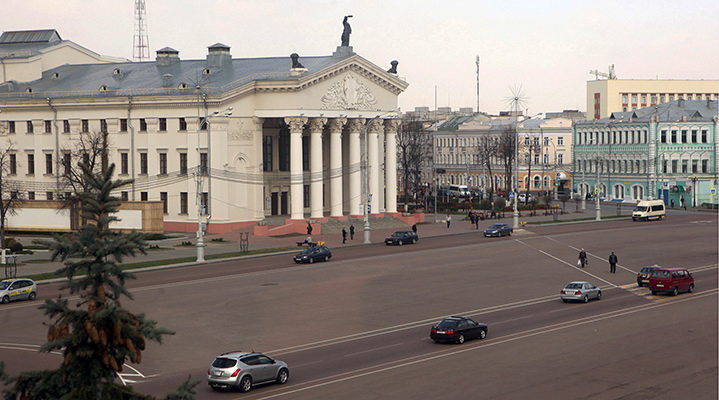 This square appeared in the late 18th – early 19th centuries and became the most popular rendezvous place in Gomel. Three times a week people from the whole neighborhood gathered here: peasants, stewards of local estates, rich merchants and small vendors who wanted to sell their goods. Twice a year, the square played host to large fairs: the Vasilyevskaya fair in January and the Vozdvizhenskaya fair in September that attracted even foreign visitors. This is why the square was named Market Square (Bazarnaya) or just the Marketplace (Torg). The square was the beginning of Rumyantsevskaya Street (present-day Sovetskaya Street), Zamkovaya Street (Lenina Avenue), and Feldmarshalskaya Street (Proletarskaya Street). Present-day Lenina Square near the old park is the symbolic start of the roads of the region.
This square appeared in the late 18th – early 19th centuries and became the most popular rendezvous place in Gomel. Three times a week people from the whole neighborhood gathered here: peasants, stewards of local estates, rich merchants and small vendors who wanted to sell their goods. Twice a year, the square played host to large fairs: the Vasilyevskaya fair in January and the Vozdvizhenskaya fair in September that attracted even foreign visitors. This is why the square was named Market Square (Bazarnaya) or just the Marketplace (Torg). The square was the beginning of Rumyantsevskaya Street (present-day Sovetskaya Street), Zamkovaya Street (Lenina Avenue), and Feldmarshalskaya Street (Proletarskaya Street). Present-day Lenina Square near the old park is the symbolic start of the roads of the region.
A new landmark was unveiled in Lenina Square in September 2020. Now it is home to a 60-meter-high flagpole with the state flag as large as 6x12 meters. Gomel was the first regional capital to get such a high flagpole for the state flag.
Gomel Drama Theater
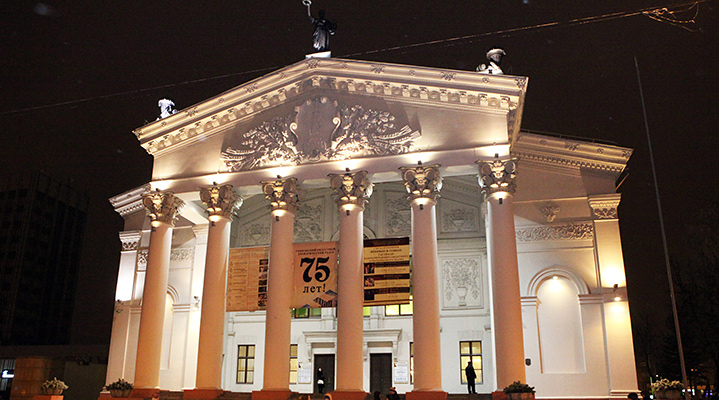
The architectural ensemble in Lenina Square is completed with a theater. It was founded in 1939 and moved into a new building in 1954. The facade is decorated with high columns, stucco, and other elements that were common for the Neoclassical style of the post-war Soviet Union. The theater can seat almost 500 spectators. Its repertoire includes the best classical and modern productions by Belarusian and foreign playwrights. The theater also hosts the festival Slavonic Theater Meetings.
Where: 1 Lenina Square
Sovetskaya Street
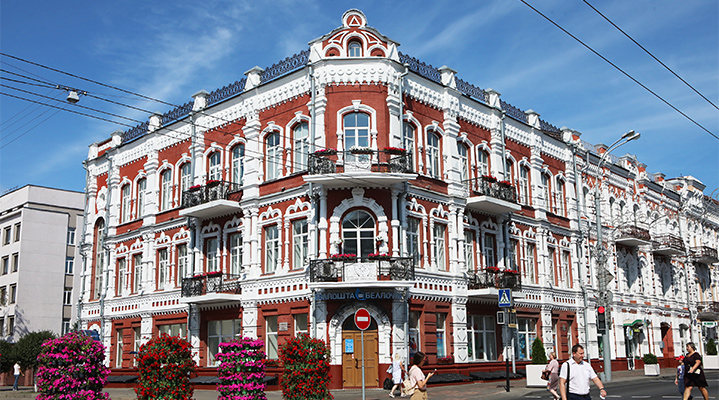 Sovetskaya Street connects Lenina Square and the park with the city center. It was once named Checherskaya, then Pochtovaya, Shosseinaya Doroga, Proboinaya, Rumyantsevskaya (named after Count Nikolai Rumyantsev, the owner of the local estate). In 1919, just like many other main city streets across the USSR, it became Sovetskaya Street. Many important facilities and landmarks of Gomel are located in this street. Gomel residents and visitors like the street for its atmosphere of an old provincial city: there are buildings in the modern and Neoclassical styles that date back to the second half of the 19th – early 20th centuries.
Sovetskaya Street connects Lenina Square and the park with the city center. It was once named Checherskaya, then Pochtovaya, Shosseinaya Doroga, Proboinaya, Rumyantsevskaya (named after Count Nikolai Rumyantsev, the owner of the local estate). In 1919, just like many other main city streets across the USSR, it became Sovetskaya Street. Many important facilities and landmarks of Gomel are located in this street. Gomel residents and visitors like the street for its atmosphere of an old provincial city: there are buildings in the modern and Neoclassical styles that date back to the second half of the 19th – early 20th centuries.
Stone houses started appearing in the street after frequent fires of the 1850s-1860s had destroyed the majority of wooden houses in various parts of the city. Rumyantsevskaya Street became the most luxurious street in Gomel, boasting wide pavements, high-end stores, banks, offices, ateliers, and revenue houses.
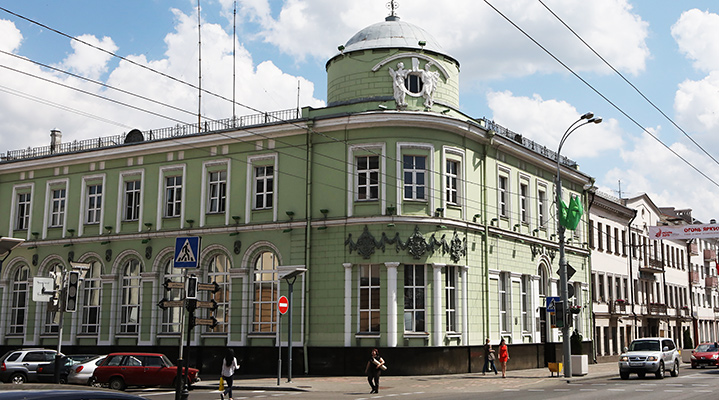 One of the surviving tourist attractions is the city hall building (the 1880s) where the Polespechat factory is located today. A famous angular building with stone cornice and facade decors imitating exquisite wood carving patterns used to be the guest house of merchant Leiba Myants and later a college building. Now it houses the office of the Belarusian postal service company Belpochta. Another guest house belonged to merchant from Gomel Yakov Lovyanov. The building of the Russian-Asian Bank designed by Oskar Muntz and built in 1910-1912 is now home to the Gomel office of the National Bank. Buildings of the former Vilnius (1912) and Orel (1903) commercial banks stand at the two crossroads… A great part of Sovetskaya Street with Neoclassic and Constructivist buildings running from the center of the city was built in the Soviet era.
One of the surviving tourist attractions is the city hall building (the 1880s) where the Polespechat factory is located today. A famous angular building with stone cornice and facade decors imitating exquisite wood carving patterns used to be the guest house of merchant Leiba Myants and later a college building. Now it houses the office of the Belarusian postal service company Belpochta. Another guest house belonged to merchant from Gomel Yakov Lovyanov. The building of the Russian-Asian Bank designed by Oskar Muntz and built in 1910-1912 is now home to the Gomel office of the National Bank. Buildings of the former Vilnius (1912) and Orel (1903) commercial banks stand at the two crossroads… A great part of Sovetskaya Street with Neoclassic and Constructivist buildings running from the center of the city was built in the Soviet era.
Gomel Circus
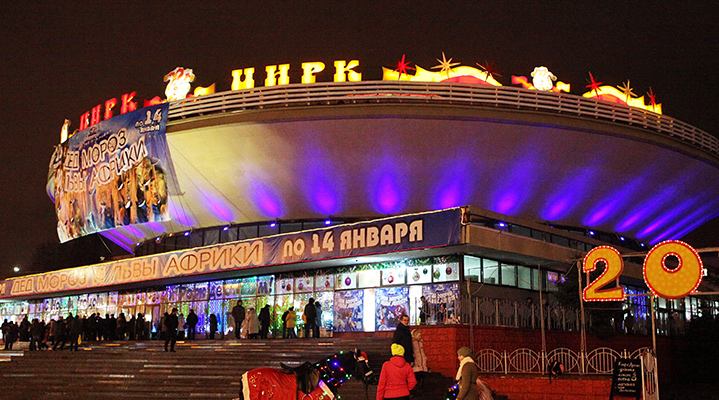 A remarkable futuristic building of the Gomel State Circus is located in Sovetskaya Street. The first circus troupe emerged in the city back in 1890, artists traveled a lot before they acquired a permanent residence. The circus building was erected in 1972. Apart from Gomel, similar circus buildings were erected in five Soviet cities – Krasnodar, Nikolayev, Grozny, Zaporozhye and Stavropol. An amphitheater bowl crowned with an oblique dome rises above the rectangular foundation of the ground floor. This building, especially in flood lights at night, reminds of a flying saucer. The square nearby is decorated with a fountain and a bronze monument to legendary Soviet clown Karandash – Mikhail Rumyantsev. It happened that the clown often performed at the arena in Gomel and had the same surname as the former owner of Gomel.
A remarkable futuristic building of the Gomel State Circus is located in Sovetskaya Street. The first circus troupe emerged in the city back in 1890, artists traveled a lot before they acquired a permanent residence. The circus building was erected in 1972. Apart from Gomel, similar circus buildings were erected in five Soviet cities – Krasnodar, Nikolayev, Grozny, Zaporozhye and Stavropol. An amphitheater bowl crowned with an oblique dome rises above the rectangular foundation of the ground floor. This building, especially in flood lights at night, reminds of a flying saucer. The square nearby is decorated with a fountain and a bronze monument to legendary Soviet clown Karandash – Mikhail Rumyantsev. It happened that the clown often performed at the arena in Gomel and had the same surname as the former owner of Gomel.
Where: 27 Sovetskaya Street
Puppet Theater
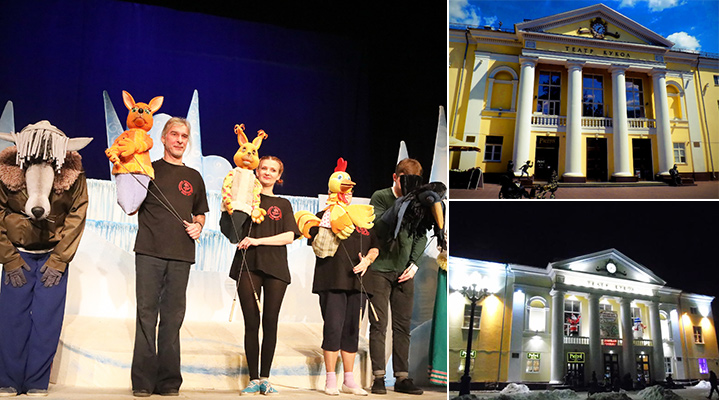 A puppet theater was opened in Gomel in 1968 by a small group of puppeteers who performed at the local drama theater. The puppet theater was founded by Viktor Chernyayev. At the beginning of the 2000s, the troupe moved to the House of Culture which became one of the most impressive theater buildings not only in Gomel but also in the entire country after the renovation. The entrance of the theater is decorated by sculptures of popular fairytale characters. The theater’s repertoire includes works of Belarusian and Russian playwrights, world classics.
A puppet theater was opened in Gomel in 1968 by a small group of puppeteers who performed at the local drama theater. The puppet theater was founded by Viktor Chernyayev. At the beginning of the 2000s, the troupe moved to the House of Culture which became one of the most impressive theater buildings not only in Gomel but also in the entire country after the renovation. The entrance of the theater is decorated by sculptures of popular fairytale characters. The theater’s repertoire includes works of Belarusian and Russian playwrights, world classics.
Where: 14 Pushkina Street
Vashchenko Art Gallery
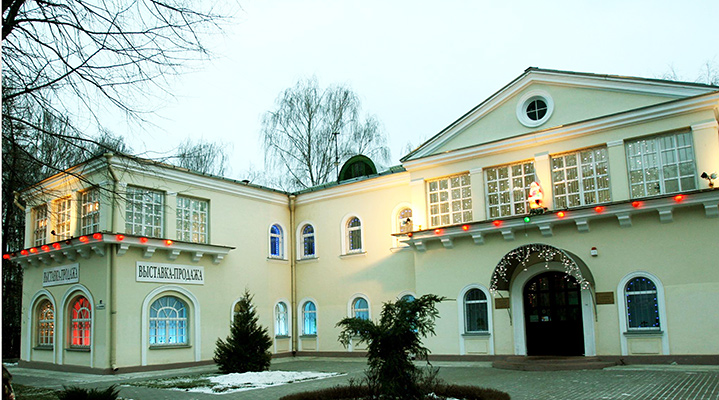 An art gallery in Gomel was named after renowned Belarusian artist Gavriil Vashchenko whose paintings are famous all over the world. The international Biographical Center in Cambridge awarded him the honorary titles “Person of the 20th Century”, “Person of the Year 1992”, the American Biographical Institute awarded him the title “Person of the Year 1994” and a commemorative medal “Honor of the Year 2000”. The art gallery in Gomel was opened in 2002 when the artist presented 50 of his paintings to the city. Later his spouse Matilda Vashchenko replenished the collection with 70 paintings of the best Belarusian artists, friends and students of Gavriil Vashchenko. As of today, there are about 400 paintings in the museum collection. The gallery is not only an exhibition area but also a landmark cultural center of the city. It hosts lectures, meetings with artists, concerts, and other events.
An art gallery in Gomel was named after renowned Belarusian artist Gavriil Vashchenko whose paintings are famous all over the world. The international Biographical Center in Cambridge awarded him the honorary titles “Person of the 20th Century”, “Person of the Year 1992”, the American Biographical Institute awarded him the title “Person of the Year 1994” and a commemorative medal “Honor of the Year 2000”. The art gallery in Gomel was opened in 2002 when the artist presented 50 of his paintings to the city. Later his spouse Matilda Vashchenko replenished the collection with 70 paintings of the best Belarusian artists, friends and students of Gavriil Vashchenko. As of today, there are about 400 paintings in the museum collection. The gallery is not only an exhibition area but also a landmark cultural center of the city. It hosts lectures, meetings with artists, concerts, and other events.
Where: 43 Lenina Avenue
Gomel Oblast Museum of Military Glory
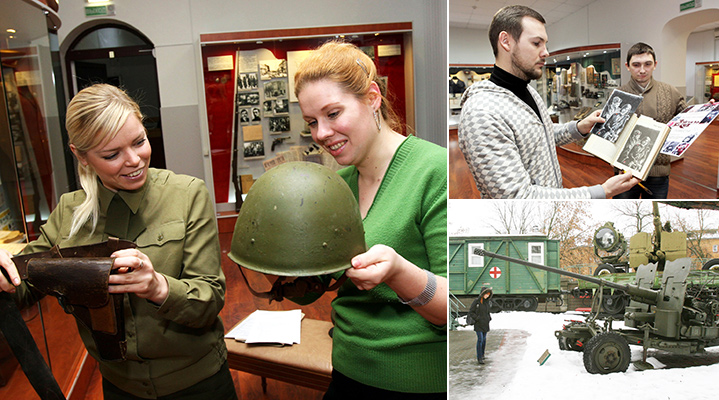
An exposition dedicated to the most tragic yet heroic periods of Belarusian history was opened in Gomel in 2004 in anticipation of the 60th anniversary of Belarus’ liberation from the Nazi invaders. A full-fledged museum complex was opened in spring 2005 in the run-up to the 60th anniversary of the Great Victory. The collection of the Gomel Oblast Museum of Military Glory tells visitors about events of local military history from days of old to present days. The exposition is located in eight halls of a two-story building as well as outdoors. Military hardware of the 20th century is on display. An exposition focusing on Belarusian partisans and an exposition inside a hospital wagon, an airsoft shooting range are available.
Where: 5 Pushkina Street
Forensics Museum
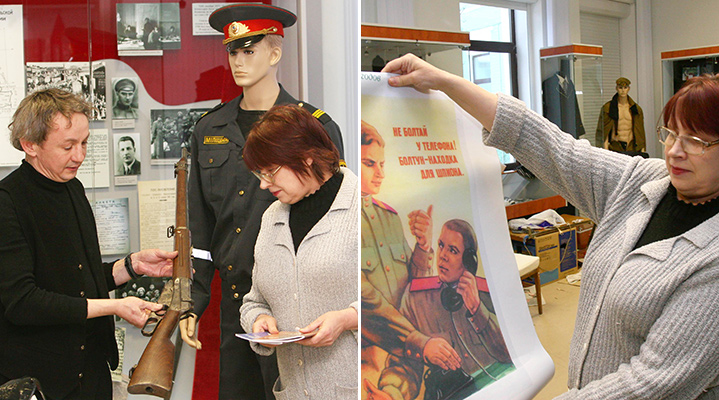 When the Gomel Oblast Museum of Military Glory was up and running, historians put together another massive collection that grew into a dedicated Forensics Museum in 2010. It is dedicated to crime prevention efforts in Gomel Oblast in 1917-2000. The collection features true rarities: weapons, police uniforms and gear, fragments of a forensic scientist office and a detective office of the late 20th century, a police motorcycle, false personal identification documents and money that have been seized from criminals, a collection of lock picks. Visitors can learn about various kinds of forensic methods the police use to solve crimes.
When the Gomel Oblast Museum of Military Glory was up and running, historians put together another massive collection that grew into a dedicated Forensics Museum in 2010. It is dedicated to crime prevention efforts in Gomel Oblast in 1917-2000. The collection features true rarities: weapons, police uniforms and gear, fragments of a forensic scientist office and a detective office of the late 20th century, a police motorcycle, false personal identification documents and money that have been seized from criminals, a collection of lock picks. Visitors can learn about various kinds of forensic methods the police use to solve crimes.
Where: 22 Pushkina Street
Printing and Photography History Museum
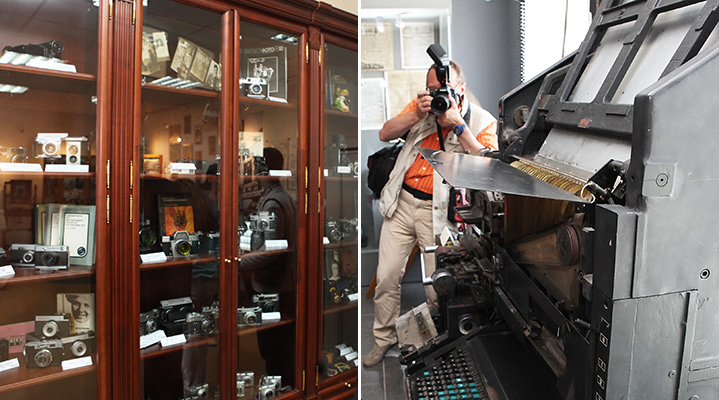 This museum was established in Gomel upon the initiative of the local mass media: the exposition was put together using rarities donated by Gomel newspapers and reporters. The collection features printing machinery and devices, archive photos, old black-and-white newspapers, bright posters, and other things.
This museum was established in Gomel upon the initiative of the local mass media: the exposition was put together using rarities donated by Gomel newspapers and reporters. The collection features printing machinery and devices, archive photos, old black-and-white newspapers, bright posters, and other things.
Where: 7 Kommunarov Street
Saint Nicholas Monastery in Gomel
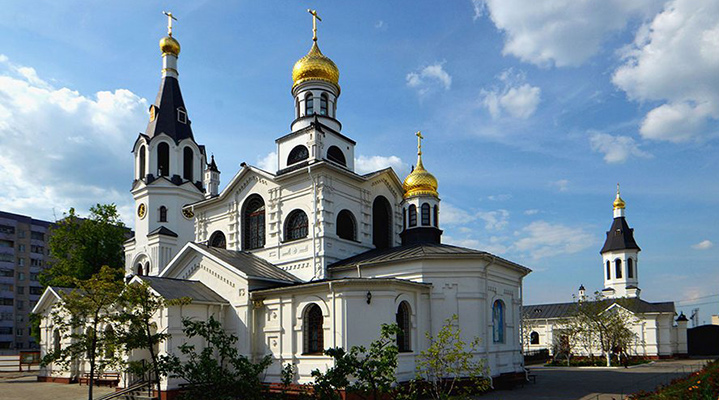 The Orthodox monastery in Gomel was founded in 1994 in anticipation of the 100th anniversary of the Saint Nicholas Church, which was built in 1904 with John of Kronstadt’s blessings using donations of railway workers. This is the main church of the monastery now. A number of other monastery buildings have been erected recently. Apart from that, a monastery mission is located in the village of Teryukha and features a wooden church erected in honor of the Smolensk Icon of the Mother of God (Hodegetria) and a house church of the holy hierarch Laurentius of Turov. A number of holy relics are kept in the monastery.
The Orthodox monastery in Gomel was founded in 1994 in anticipation of the 100th anniversary of the Saint Nicholas Church, which was built in 1904 with John of Kronstadt’s blessings using donations of railway workers. This is the main church of the monastery now. A number of other monastery buildings have been erected recently. Apart from that, a monastery mission is located in the village of Teryukha and features a wooden church erected in honor of the Smolensk Icon of the Mother of God (Hodegetria) and a house church of the holy hierarch Laurentius of Turov. A number of holy relics are kept in the monastery.
Where: 4 Nikolskaya Street
Saint Tikhvin Convent
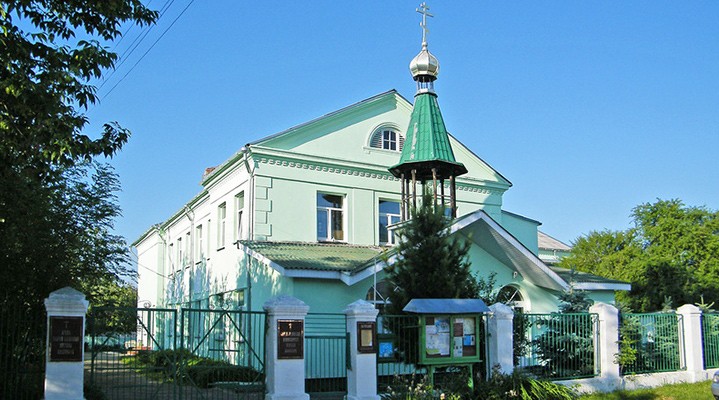 The convent was named after the Tikhvin icon of the Mother of God. The modern convent was established in 1993 under the aegis of the Saint Peter and Paul Cathedral Church. However, the history of the convent numbers several centuries. In 1899 the Old-Rite Assumption Monastery, which was founded in 1775, was converted into an Orthodox convent. It was located in the village of Chyonki on the bank of the Sozh River not far from Gomel. The nuns followed rigorous Sarov rules. During the 20th century the convent was closed and reopened more than once. Since 1993 it has existed as a convent. The convent has two missions – in the village of Bobovichi with the Saint Nicholas Church and in the village of Chyonki with a house church and a church erected in honor of Saint John the Baptist. A number of holy relics are kept in the convent. The convent also includes a holy wellspring, near which bath houses and a chapel have been built.
The convent was named after the Tikhvin icon of the Mother of God. The modern convent was established in 1993 under the aegis of the Saint Peter and Paul Cathedral Church. However, the history of the convent numbers several centuries. In 1899 the Old-Rite Assumption Monastery, which was founded in 1775, was converted into an Orthodox convent. It was located in the village of Chyonki on the bank of the Sozh River not far from Gomel. The nuns followed rigorous Sarov rules. During the 20th century the convent was closed and reopened more than once. Since 1993 it has existed as a convent. The convent has two missions – in the village of Bobovichi with the Saint Nicholas Church and in the village of Chyonki with a house church and a church erected in honor of Saint John the Baptist. A number of holy relics are kept in the convent. The convent also includes a holy wellspring, near which bath houses and a chapel have been built.


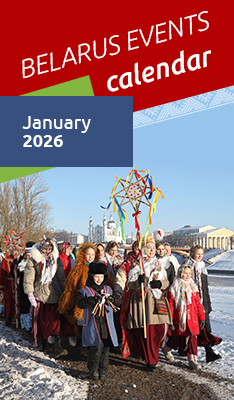




 print version
print version make home page
make home page add to bookmarks
add to bookmarks
